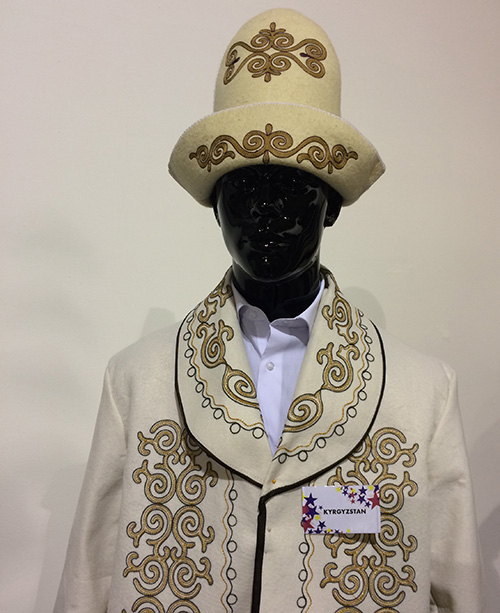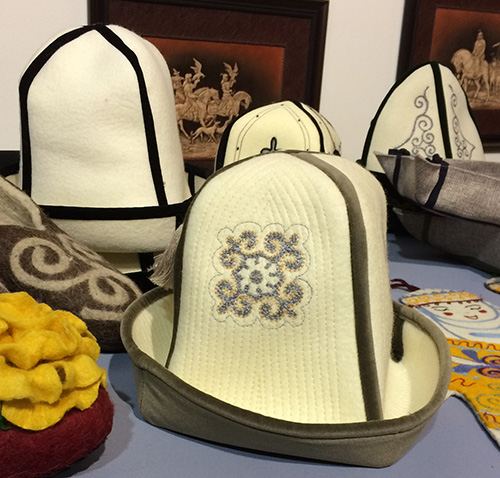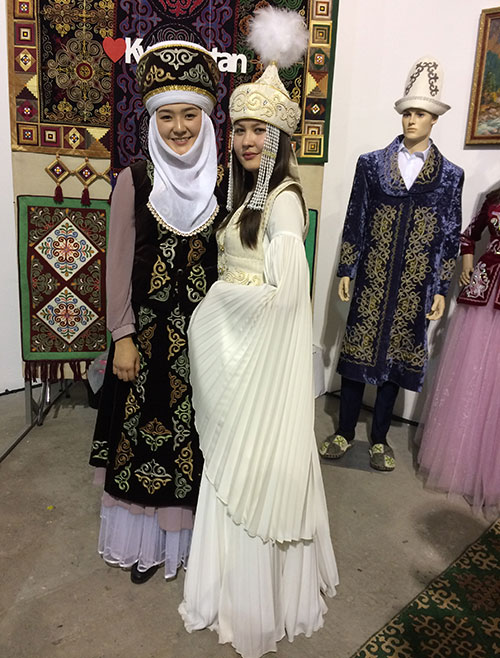 The national costume of Kyrgyzstan hasn’t changed much for the last almost 700 years. A lot of garments remain practically identical to vintage items. But, of course, slight changes occur with time – mainly in decoration and details of the outfit or sometimes in the cut. For instance, modern Kyrgyz folk dresses can be shorter and more fitting, while the traditional embroidery patterns are still used to embellish them. But let’s look at 5 curious features of Kyrgyz national male and female costume.
The national costume of Kyrgyzstan hasn’t changed much for the last almost 700 years. A lot of garments remain practically identical to vintage items. But, of course, slight changes occur with time – mainly in decoration and details of the outfit or sometimes in the cut. For instance, modern Kyrgyz folk dresses can be shorter and more fitting, while the traditional embroidery patterns are still used to embellish them. But let’s look at 5 curious features of Kyrgyz national male and female costume.
Fact #1
Kyrgyz men traditionally used clothes made from animal fibers, skin, fur, etc. That’s because, in Kyrgyzstan, cattle-breeding was a large part of the lifestyle. So, people have always had enough of leather, fur, and wool. And Kyrgyz male traditional garments were usually produced from these materials.

Kyrgyz men's traditional coat and kalpak made from white wool
Some of the female garments are made from animal fibers and materials as well, but other fabrics were also used, like cotton, velvet, brocade, etc.
Fact #2
There is a wide variety of Kyrgyz men’s traditional headdresses, but the most popular male hats these days are kalpak and tebetei. Kalpak is a felt headdress, high-crowned and narrow-brimmed, often white, beautifully adorned with embroidery. It is an all-season headwear. Tebetei is a winter hat, it is made from or at least trimmed with fur, the crown can be sewn from felt or leather. Tebetei is a beautiful and regal-looking hat.

Kyrgyz folk kalpaks
Fact #3
Tebetei used to be a significant ceremonial headdress. For example, it was a central accessory in the ceremony of proclamation of the khan (title of the ruler in Central Asia, like a king in Europe or sheikh in the Arab world). During this ceremony, the new khan was lifted high above the crowd on a snow-white woolen piece of cloth and an eye-catching tebetei with a red crown was put on the khan’s head. So, this headpiece played a very important role in Kyrgyz culture.
Fact #4
Kyrgyz women changed a few styles of headdresses during their life. Unmarried girls wore simpler hats trimmed with fur, brides wore very ornate, richly adorned conical headpieces called “shokulo”, married women used headwear called “elechek” (sort of an intricate wimple), etc. Each headdress was meaningful and showcased status, region of origin, and wealth of a family.

Kyrgyz traditional costumes
Fact #5
Women in Kyrgyzstan traditionally wore one unique and charming accessory – velvet tubes or ribbons that covered the braids. Usually, a woman plaited her hair in two braids that hang at her back. These braids were covered with special velvet accessories, richly embellished with jewelry, embroidery, beads, etc. This accessory was tied to a braid at the nape and covered the whole length of a braid. It was also rather heavy because of all those silver decorations, coins, and beads, but the look was worth the effort.


